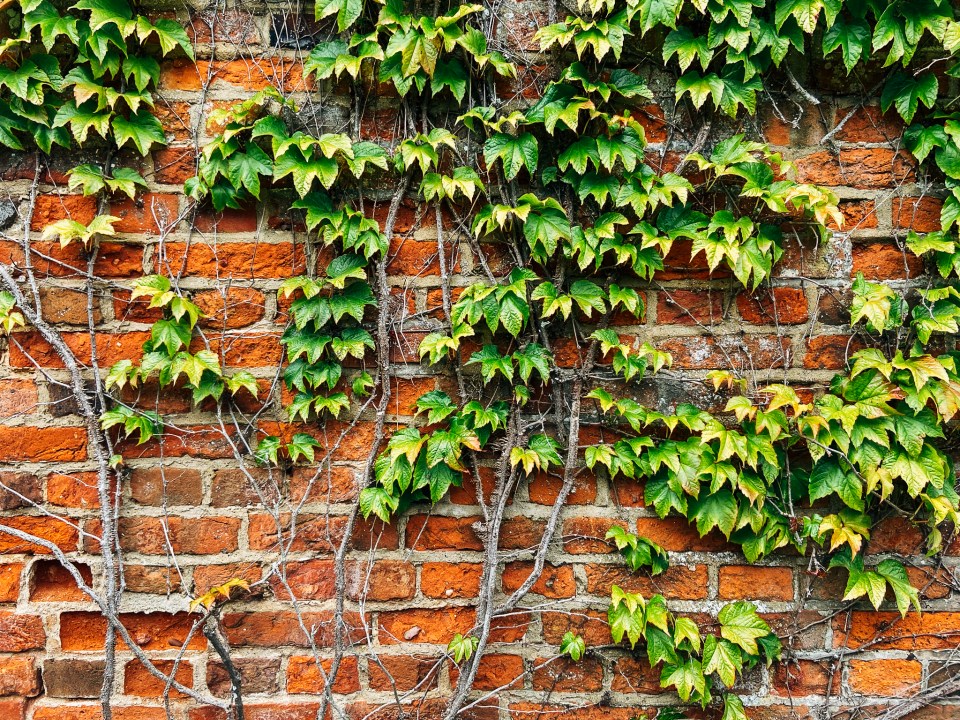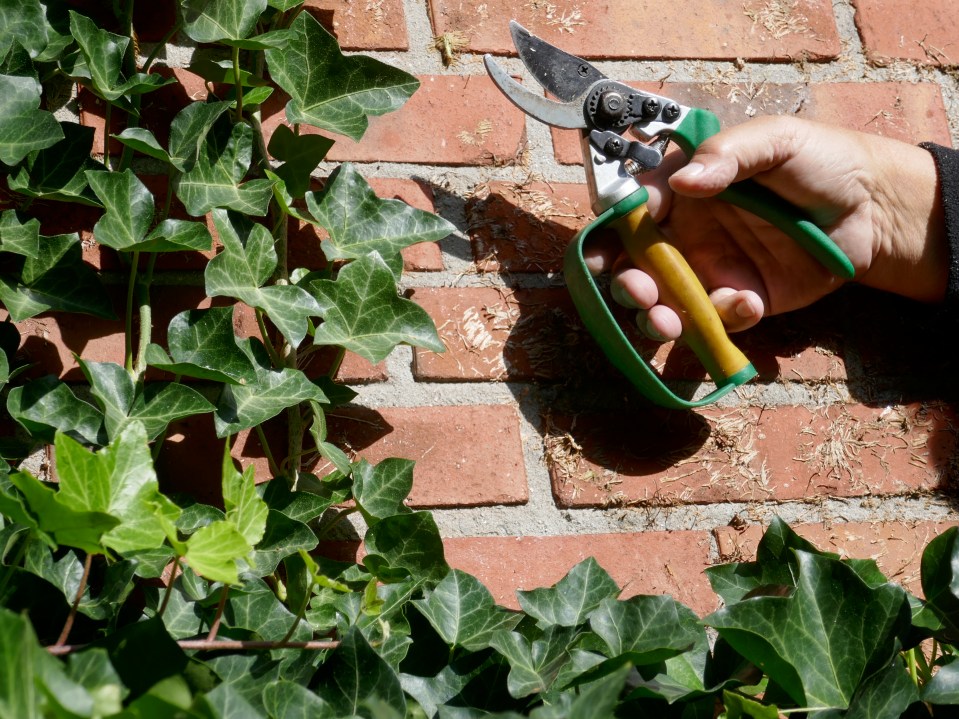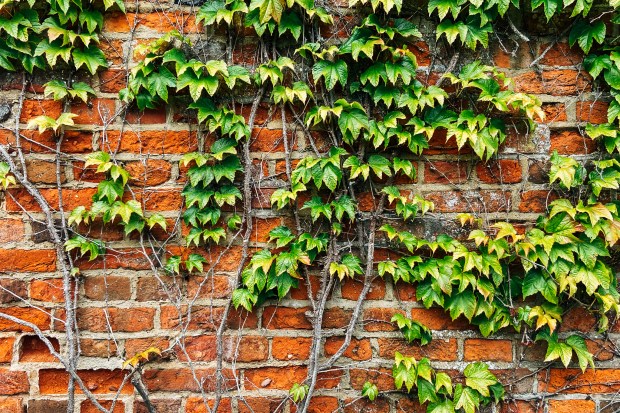Transform Your Garden: Effective and Affordable Ivy Removal

If you’re grappling with the highly invasive and destructive nature of ivy in your garden or home, worry not! We have an effective solution for you. Ivy, commonly known as English ivy or Hedera helix, is a hardy plant that often climbs fences, walls, and trees, adding a picturesque charm to many spaces. However, when it becomes overgrown, it can cause serious structural damage by invading cracks and joints in buildings. Fortunately, if you’re on a budget and seeking a cost-effective solution, we have a simple three-step method to help you eradicate this pesky plant for good.
Ivy is notoriously difficult to eliminate due to its waxy leaves and extensive root system, which allows it to resist many commercial weed killers. Nevertheless, Oren Kander, a gardening expert and director at Gaffsy, has shared a straightforward and effective technique to permanently remove this invasive species. He emphasizes, “Don’t let its beautiful appearance fool you—English ivy can be incredibly destructive. It drains nutrients from other plants, suffocates trees, and serves as a perfect hiding spot for pests, vermin, and insects.”
Before you start the removal process, it’s crucial to protect yourself by wearing eye protection, gloves, and long sleeves, as the rough texture of ivy can cause scratches. The first step in the removal process is to cut the vines at the base. This will significantly hinder its ability to regrow. Use a pair of shears to cut the ivy at the base of the wall or tree, ensuring you remove all vines around the base to prevent future growth.
Understanding English Ivy

English Ivy, scientifically known as Hedera helix, is a versatile and resilient evergreen vine commonly found in gardens, landscapes, and indoor settings. Originating from Europe and Western Asia, it is valued for its lush, green foliage and its ability to cover walls, trellises, and ground surfaces.
Key Characteristics:
- Foliage: English Ivy features glossy, dark green leaves that may be lobed or unlobed, depending on the variety and maturity of the plant.
- Growth Habit: This vigorous climber utilizes aerial rootlets to attach itself to surfaces and can spread along the ground, forming dense mats of foliage.
- Flowers and Fruits: Although often overlooked, English Ivy produces small, greenish-yellow flowers in late summer to early fall, which are followed by black or dark purple berries. While toxic to humans, these berries are a food source for birds.
Uses:
- Ground Cover: Ideal for preventing soil erosion and covering large areas with minimal maintenance.
- Climbing Vine: Excellent for adding greenery to walls, fences, and trellises, enhancing both aesthetic appeal and privacy.
- Indoor Plant: Popular as a houseplant due to its adaptability to low light conditions and ease of care.
Care Tips:
- Light: Thrives in partial to full shade but can tolerate some sunlight, especially in cooler climates.
- Water: Prefers moist, well-drained soil but is relatively drought-tolerant once established.
- Pruning: Regular pruning helps control its growth and prevents it from becoming invasive.
- Soil: Adaptable to various soil types, though it prefers slightly alkaline to neutral pH levels.
Cautions:
- Invasiveness: In certain regions, English Ivy is considered invasive due to its aggressive growth, which can outcompete native plants and damage structures if not managed properly.
- Toxicity: All parts of the plant contain compounds that can be toxic if ingested by humans and pets, and handling it may cause skin irritation in sensitive individuals.
After a week of cutting, you’ll notice the ivy wilting and turning brown. Once it’s completely dead, you can gently pull it away from the structure. At this point, it should be easier to remove, and using a shovel will help you dig out the roots to prevent regrowth. The second step involves applying a herbicide to eliminate any remaining roots.
Essential Gardening Considerations

Gardening experts at Toolstation have outlined key laws that gardeners should be aware of to avoid potential fines. Ignorance of these laws can lead to disputes with neighbors, and in extreme cases, fines of up to £20,000.
Tree Removal and Pruning:
Before removing or heavily pruning a tree, it’s essential to consider the views and privacy of your neighbors. If the tree is protected by a Tree Protection Order (TPO), uprooting or damaging it could result in hefty fines. Always consult your local council for guidance on TPOs.
Property Boundaries and Fences:
Disputes over property boundaries and fencing are common. To avoid conflicts, check your property deeds to confirm boundaries. Typically, fence posts indicate ownership. Additionally, ensure that the height of hedges and fences does not exceed two meters, as complaints can prompt council intervention.
Garden Structures and Additions:
Adding structures like pergolas or sheds can enhance your garden but may obstruct your neighbor’s view or violate local regulations. Communicating with neighbors beforehand can help prevent disputes.
Overhanging Branches and Plants:
Branches or roots extending into a neighbor’s property can lead to disagreements. You are entitled to trim overhanging branches up to the boundary of your property, but be cautious not to trespass.

If you prefer a natural and chemical-free approach, consider applying boiling water or white vinegar—available at local supermarkets—for any remaining foliage. The final step in combating ivy is monitoring your garden closely and promptly removing any new shoots, as ivy is quite resilient. Patience is key, as it may take several attempts to fully eradicate it. However, with determination, you can achieve a beautiful, ivy-free garden without spending a fortune on expensive gardening products.
March Gardening Jobs

The Sun’s Gardening Editor, Veronica Lorraine, has shared essential gardening tasks to kick off the spring season:
Start Sowing Seeds:
Begin planting aubergine seeds in a propagator or outdoors after the last frost. Consider trying heirloom varieties for a diverse harvest.
Buy and Plant Summer Bulbs:
Summer-flowering bulbs like gladioli, dahlias, and peonies will add vibrant blooms to your garden.
Lawn Care Starts Now:
Commence lawn care with a high-nitrogen spring feed and reseed any bare patches. Regular mowing will soon follow!
Check Compost:
Incorporate well-rotting compost into your soil for natural nutrients. If space allows, dig trenches for vegetable scraps to enhance your compost.
Clean Outside Spaces:
Give your patios and paths a thorough cleaning with a pressure washer—a fun job for kids!
Soak Sweet Peas:
Soak sweet pea seeds before planting them in pots; pinch out the growing tips to encourage bushy growth.
Create a Wildflower Meadow:
Consider sowing a wildflower meadow using shop-bought seed mixes or seed bombs for effortless planting.